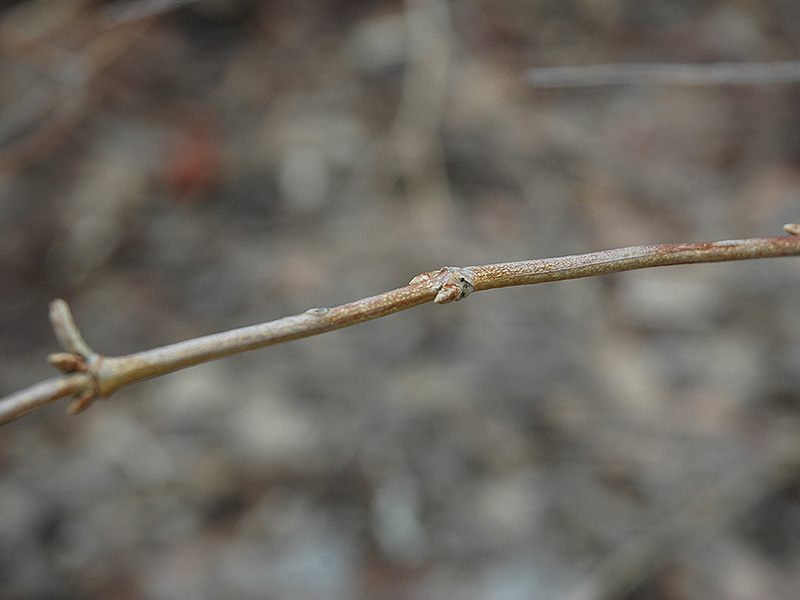| General Description | Multi-stemmed, upright. Distinctly veined leaves. Flowers in late summer to early autumn. |
| ID Characteristic | Exfoliating tan bark, late summer white flowers, red sepals in late autumn, leaves have 3 main parallel veins.
|
| Shape | Multi-stemmed & single stemmed, upright branching. Develops loose, rounded/irregular form & unkempt. |
| Landscape | Used in large borders or in groups as an island planting.
|
| Propagation | Seeds require 5 months warm and 3 months cold. July cuttings 10 to 15cm long, 10,000ppm IBA, with 81% rooting by October.
|
| Cultivation | Best in full sun, soil adaptable, but prefers moist, well drained fertile soil. Easily transplanted and grown, may need pruning to tame errant shoots, and form ungainly.
|
| Pests | Stem dieback possibly due to canker. Plants in shade seem to develop retained sepals. |
| Notable Specimens | The Gardens of Fanshawe College, London, Ontario, Canada and The A.M Cuddy Gardens, Strathroy, Ontario, Canada. Westonbrit Arboretum, Tetbury, England. |
| Habitat | Zhejiang Province in China, found in well drained fertile soil. |
| Bark/Stem Description | Grey brown, exfoliating on 1.25 -2.55 cm diameter stems to reveal a tan bark. Attractive, bark comes off in strips, and is reminiscent of crape myrtle or beautybush.
|
| Flower/Leaf Bud Description | Imbricate, light brown, glabrous, ovoid, 4 - 7 mm long, forming 45 degree angle with stem.
|
| Leaf Description | The most beautiful part of the plant, emerging early, soft green maturing to dark green, retained late into November, poor autumn colour, yellow at best. Simple deciduous leaves, opposite leaf arrangement, 5 -15 cm long, half as wide, rounded apex. |
| Flower Description | Fragrant white small flowers, born in 15.24 cm long panicles, bloom late August and September, showy and may attract butterflies. Sepal's are a dull red/brown to burgundy.
|
| Fruit Description | Capsules that can retain sepals, sepals change from green to burgundy and last up to 3 weeks, sepals are as showy as flowers.
|
| Colour Description | Dark green in summer, yellow in autumn, flowers are white, bark is grey brown.
|
| Texture Description | Medium – medium coarse
|




